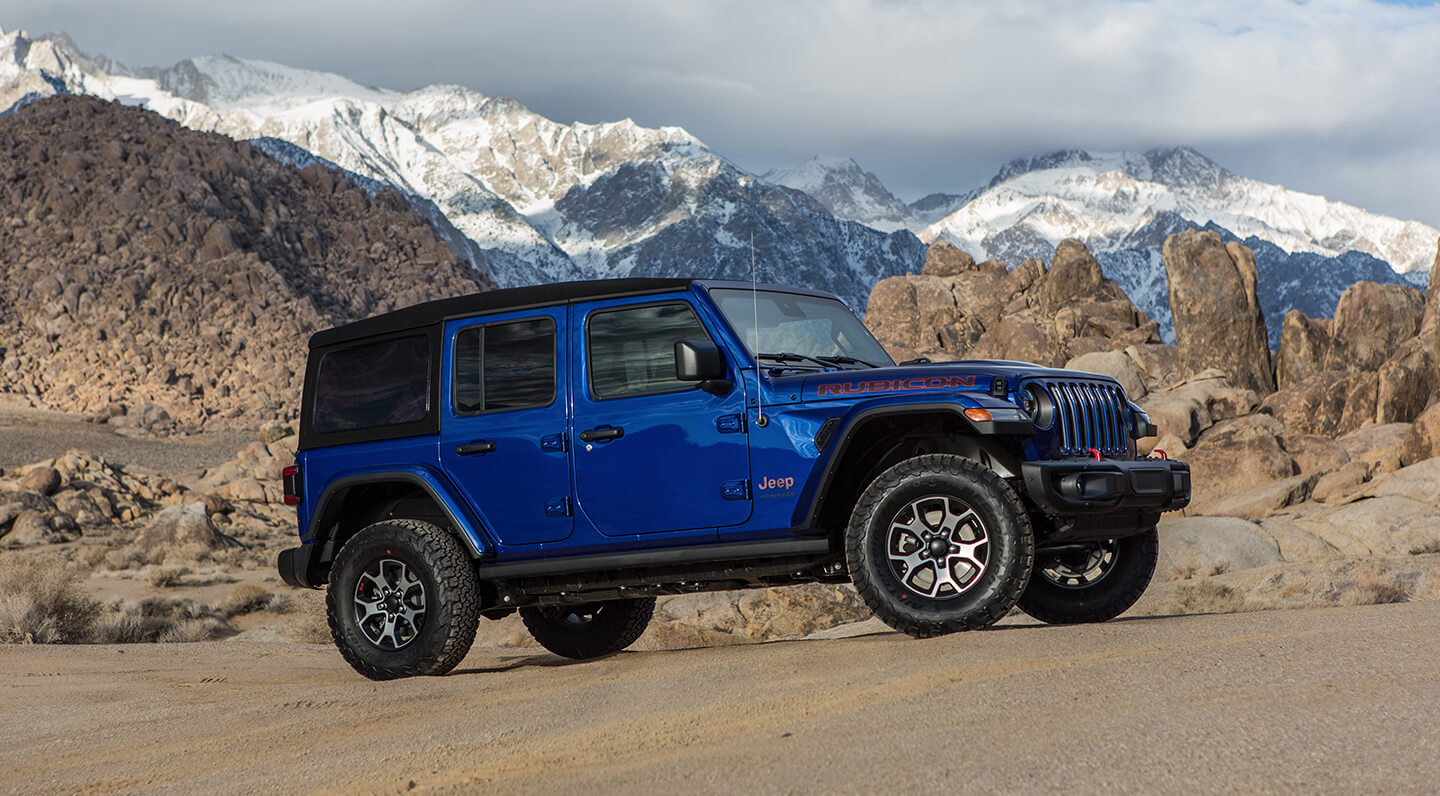
There has never been a better time to buy a four-door Jeep Wrangler. The new JeepWrangler JL is available at dealerships all over the country, and there is an abundance of used 2007-17 Wrangler JKs on the market too. Both the JK and the JL feature solid axles, coil suspension, and removable tops. We compare the two Wranglers to each other because no other manufacturer makes a vehicle with this combination of features. Varying from high mileage stockers to built low-mileage JKs, there is a four-door Wrangler to fit every budget and application. Which model you choose will depend not only on how much you want to spend now, but what your future modification plans are. What you want to do with your new Jeep will also play a role. Daily driver? Family hauler? Hardcore rock crawler? We’ve got all the information you need to be an informed buyer and get the best Jeep for your specific needs.
The fender flares on the new JL are larger to accommodate a larger tire than the JK. Rubicon models even have a bigger fender opening than the normal Wrangler on the JL models. However, this really isn’t a huge benefit if you plan to install aftermarket fender flares on a JK anyway.
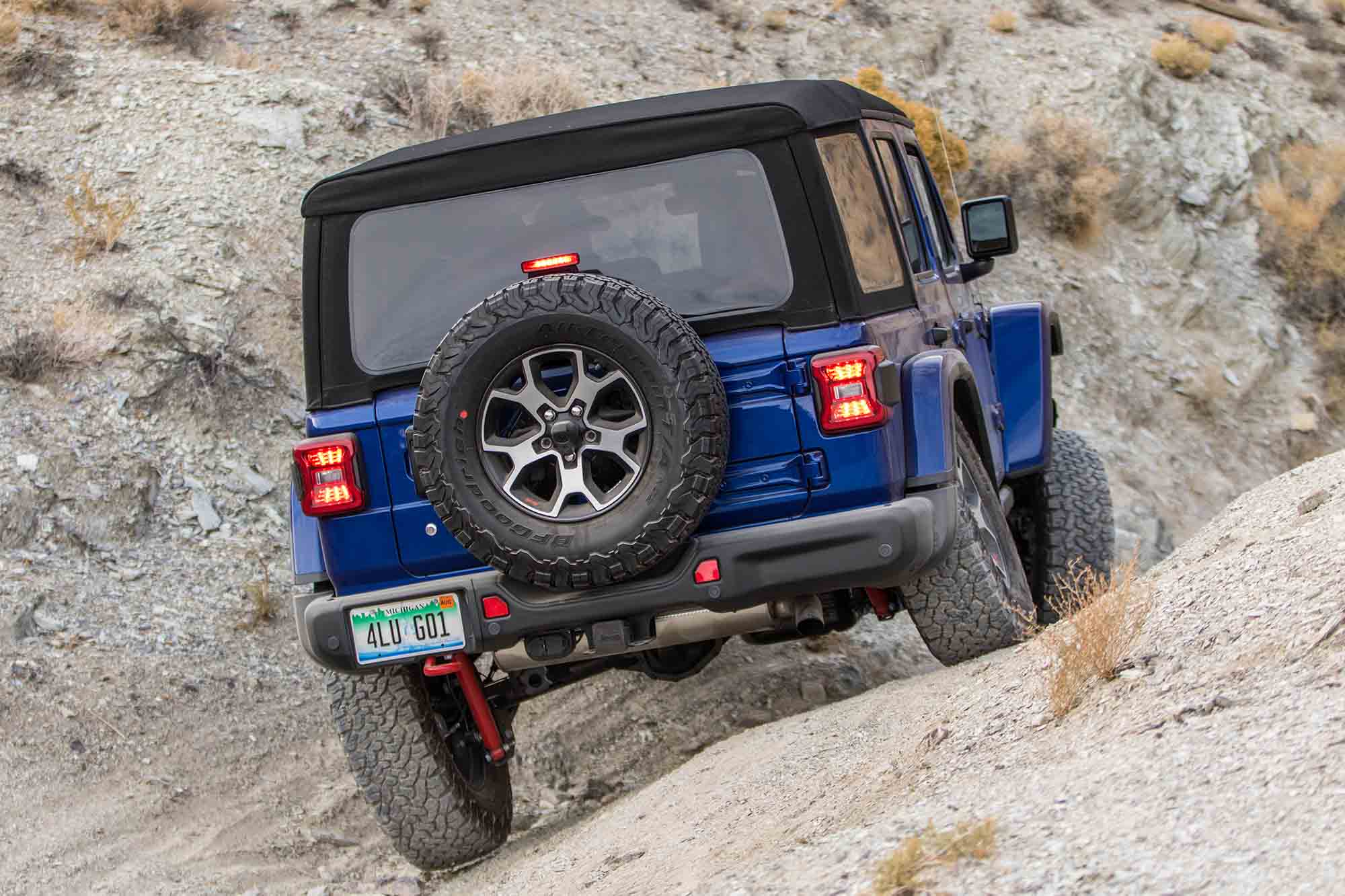
The suspension on the JL is similar to the JK, with coil springs and four-link geometry front and rear with track bars. The shocks have been moved outboard in the rear though, the track bar angle has been lessened, and the spring and shock rates are revised. None of this matters though if you plan to replace the suspension.
Powerplant Options
We should back up though and start by stating that we are only considering JKs from 2012 and up. That is because the interior was dramatically redesigned in 2011 and the 3.6L Pentastar V6 engine first appeared in 2012. The earlier 3.8L V6 was not only down on power but also somewhat notorious for reliability issues. We would pass on these earlier JKs unless you get a screaming deal and plan to perform a V8 swap.
The same 3.6L Pentastar engine (285 horsepower and 260 lb-ft of torque) is used in the JL. A 2.0L turbocharged four-cylinder engine (270 horsepower and 295 lb-ft of torque) with a mild hybrid system that Jeep calls eTorque is also available in the new JL. Both power and mileage numbers are comparable between the two, though the turbocharged engine leaves a lot more room on the table to increase power through aftermarket upgrades. A 3.0L V6 EcoDiesel is also anticipated for 2020 if you have an aversion to spark plugs. The EcoDiesel is already available in the Grand Cherokee and Ram 1500, where it makes 260 horsepower and a healthy 442 lb-ft of torque.
More Speeds Please
The most significant drivetrain improvement between the JK and the JL is the introduction of the eight-speed automatic transmission. This transmission has a lower first gear than the outgoing five-speed automatic for better crawling (4.7:1 versus 3.0:1), tighter gear splits to keep the engine in the powerband, and two overdrive gears to keep the revs down on the freeway and maximize fuel economy. Many JL owners are reporting that they can run 37-inch tall tires with the factory 4.10 gears found in JL Rubicons without the need to regear due to the new transmission. Doing so will effectively turn your eight-speed into a six-speed as the transmission will no longer want to stay in the overdrive gears on anything but flat roads. However, the lower gearing helps negate the effect of bigger tires and helps in acceleration. The JL Rubicon retained the excellent Rock-Trac NP241OR transfer case with a 4:1 low range ratio, while the non-Rubicons share the regular NP241 with a 2.71:1 low range.
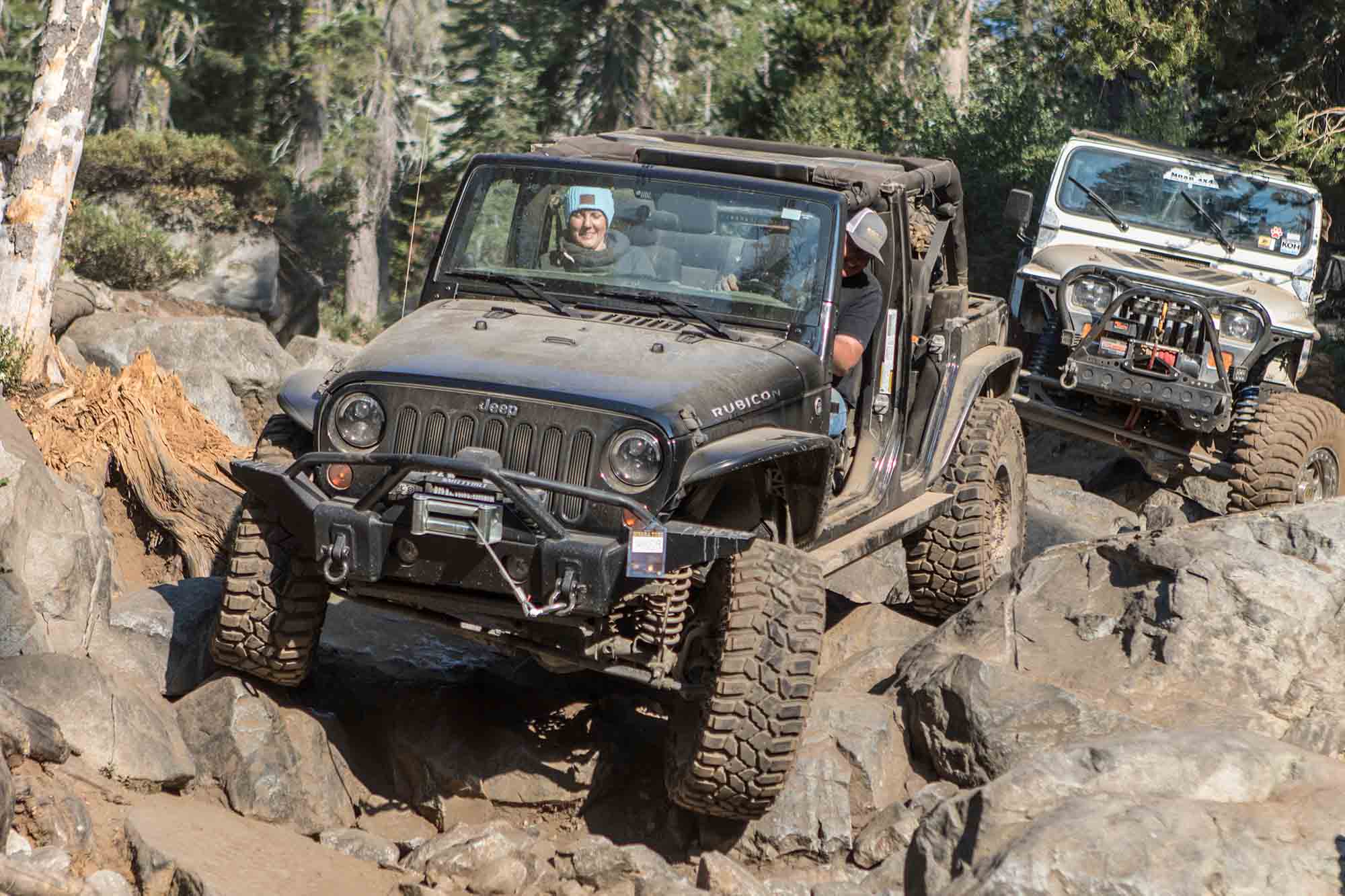
Both the JK and the JL work well on the trail. We would give an edge to the JL with its optional eight-speed transmission. It can crawl better with its lower first gear offering more control. However, if we already had a built up JK that worked well, it would be hard to justify the upgrade. The JL is better in almost every aspect over the JK, but it is more evolutionary than revolutionary.
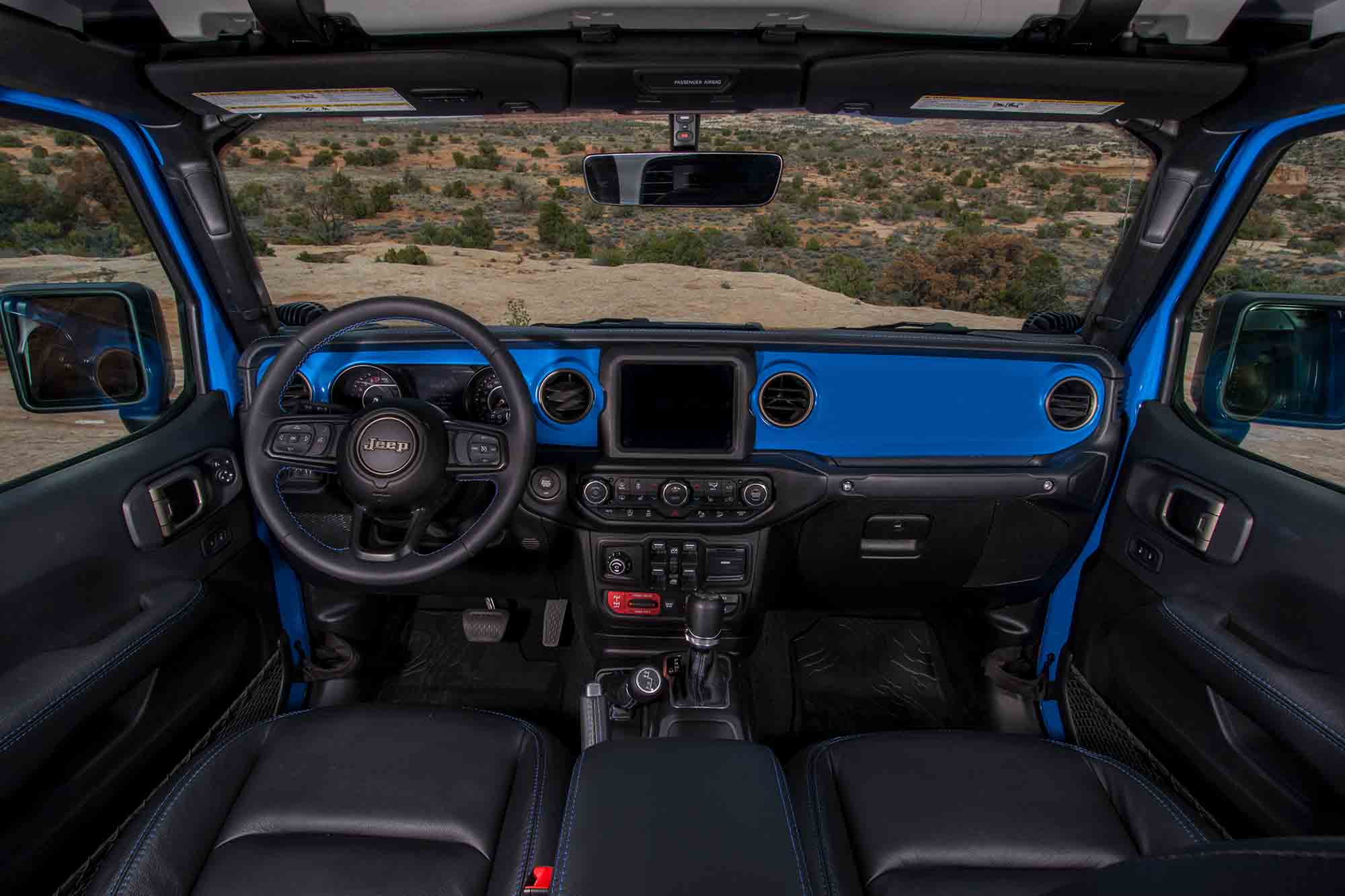
The interior on the JL is nicer than the JK, but not enough that we would discount the JK from consideration. The JK got a new interior in 2011 that is a step forward from the previous version. Some features only found on the JL include push-button start, a better infotainment system, a standard backup camera, and start-stop technology.
All Dana 44s Are Not Created Equal
The Rubicon JL model features new Advantek Dana 44 axles that have one-inch larger front brakes than the JK and address the axle tubing bending issues of the JK with stronger 2 3/4-inch diameter axle tubes. The tradeoff is that the JL axles also have aluminum knuckles and a two-piece long side axle shaft to increase fuel economy at the expense of strength. The JL’s axles are also an inch wider than the JK, with a width of 61.9 inches. Turning the aluminum knuckles on the Dana 44 is a new electro-hydraulic power steering system that provides excellent assist, even for large tires aired down to trail pressures. How durable this system remains to be seen, but early reports are very encouraging.
It’s What’s Inside That Counts
We mention the Rubicon model repeatedly, and it really is worth the extra expense if you plan to use your Wrangler off-road. The Rubicon edition of both the JK and the JL adds front and rear selectable lockers, 4.10 gears, a Dana 44 front axle instead of a Dana 30, an electronic disconnecting sway bar, and a 4:1 transfer case. On the JL, choosing a Rubicon model over a Sport or Sahara also gains you two-inch higher fender flares for more clearance. Enough clearance, in fact, to run 35-inch tires on a Rubicon without any suspension modifications. Of course, with a JK there are dozens of fender options that get you more tire clearance. We expect aftermarket flare options for the JL in the near future, but the aftermarket is still gearing up on the new Wrangler, so you have to be patient.
Inside, the JL interior is updated with more comfortable seats, a lower beltline for better visibility on the trail, a much better infotainment system, and dual climate control. Overall, it is a much nicer place to rack up the miles when compared to the JK. We have access to both a JK and JL and we always pick the JL every time if we are going on a long road trip.
The windshield on the JL is considerably easier to fold down than the JK and looks cleaner. Although, with the sport bar still in place it doesn’t entirely look like the windshield is folded down. We really don’t know that many people who fold down their windshields so it isn’t that big of an advantage. The JL is also about 200 lbs. lighter than the outgoing JK. Half of the weight savings comes from the new hydroformed, high-strength steel frame. The other half of the weight reduction is a result of the aluminum doors, hinges, hood, and fenders, as well as a magnesium tailgate.
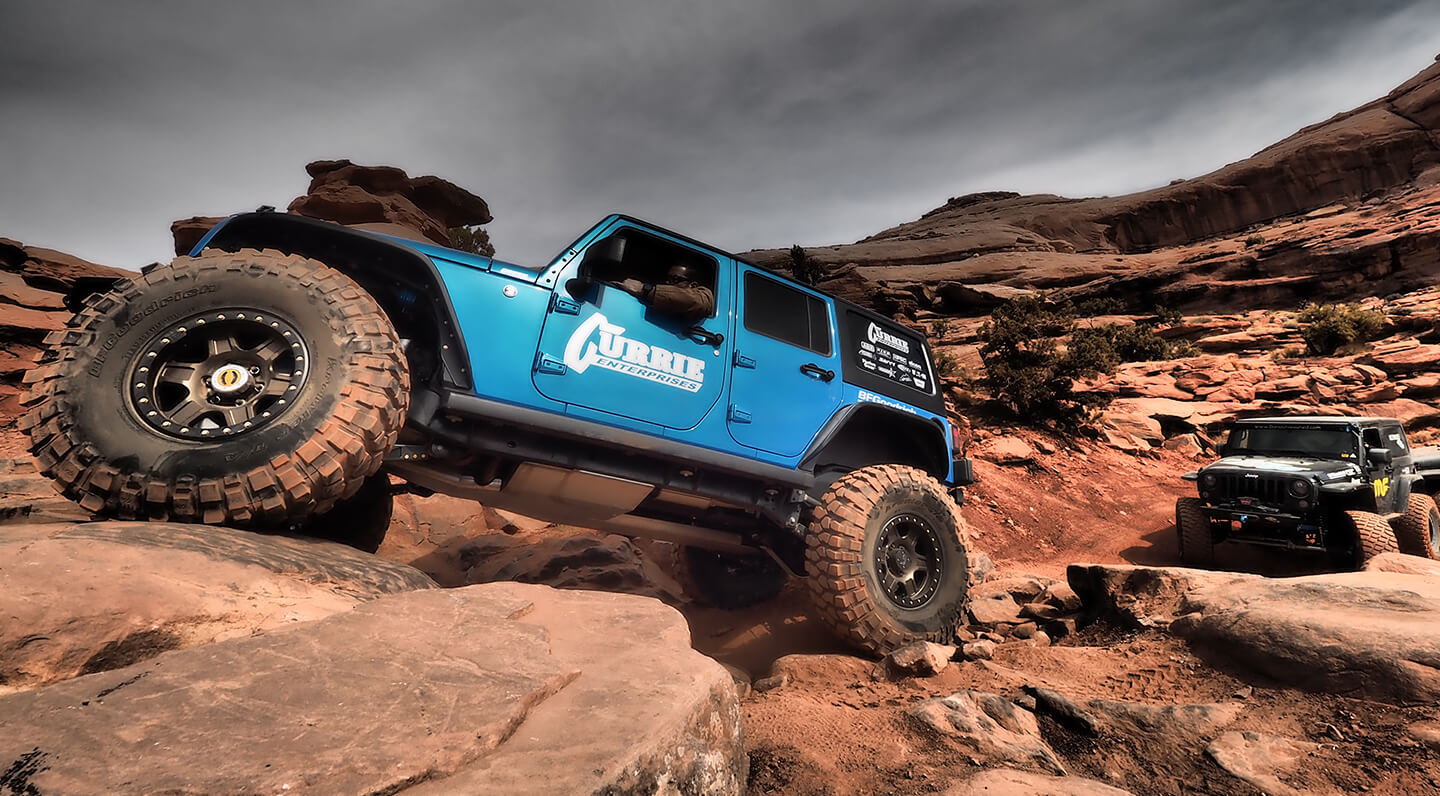
The Jeep JK is still the absolute king of the aftermarket. If you can think of a part, chances are good that is availabe for the JK. More lift kits, bumpers, armor, and the like are coming online every day for the JL, but it still has a ways to catch up.
Suspension Revision, Not Revolution
Like the JK, the new JL retains the four-link suspension with track bars front and rear. But like everything else on the JL, the suspension has been refined. The spring rates and shock damping has been revised and the track bar angles have been decreased for a higher roll center that results in improved handling on the street and more stability on the trail. The rear shocks have also been relocated outboard of the frame where they are more upright and do a better job of controlling axle movement.
If you are going to leave the suspension stock on your Wrangler, or just run a simple spacer lift, the JL is a significant improvement. It rides much nicer than the JK, and you almost forget you’re in a solid-axle vehicle built for going off-road. If you are going to add an aftermarket suspension with new coils, shocks, and control arms, the gap between the JL and JK gets much smaller.
So Is It Worth It?
If you already have a built JK we wouldn’t run out and trade it in on a JL unless you absolutely must have the latest and greatest. The JL is better in nearly every way, but only slightly. The interior is a jump forward but think of the rest of the JL as more of an evolution than a revolution. The exception is the transmission, which is a game changer on the street and provides a significantly better crawl ratio on the trail. New JL Rubicons are selling for around $47,000 and up depending upon options. A used JK Rubicon with under 40,000 miles on it is selling for around $34,000. Of course, there are lots of variables like location, what kind of shape the vehicle is, and others that affect the price.
Either way, it is safe to say that buying a used Jeep JK Rubicon is going to save you at least $10-15,000. That’s a lot of scratch and means that purchasing a JK leaves plenty of money on the table for upgrades. We would spend the difference on a new suspension, 35-inch tires, G2 chromoly axle shafts, a front axle truss, bumpers, rock sliders, and a winch. With the money left over, you could even have it all installed at 4 Wheel Parts. For a full test of the Jeep JK versus the Jeep JL off-road check out our story here.



2